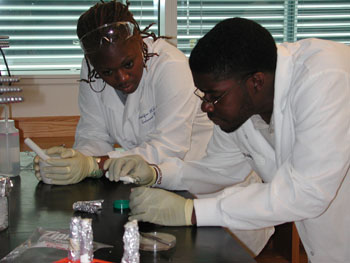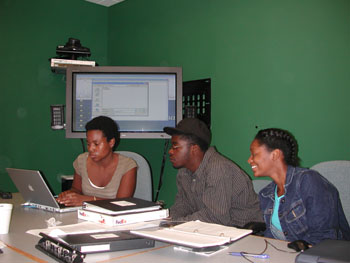Initial Publication Date: May 9, 2006
Outreach:
- A key outreach element of this project is the Summer Microbiology and Research Training (SMaRT) Microbiology of Marine Sponges (MOMS) course. The first SMaRT MOMS course was held at the Center of Marine Biotechnology during the summer of 2004, with all project personnel contributing to this intensive, laboratory-based 10-day course.
- The microbial communities associated with marine sponges were used as a teaching tool to encourage undergraduate students to consider a career in research. The students were guided in work on relevant research projects and their resultant data has been incorporated into our study.
- Educational activities coupled with sample collection on the Chesapeake Bay included extraction of DNA from sponges and bacterial isolates, PCR amplification of 16S rRNA genes, and community fingerprinting with denaturing gradient gel electrophoresis (DGGE). Screening of bacterial isolates was also carried out to look for production of signaling compounds using thin layer chromatography and an Agrobacterium-based AHL reporter system.




Deeper questions raised by this research?
- Do most species of marine invertebrates have unique bacterial species associated with them as the marine sponges do?
- How does this research change the way we think about the number of bacterial species on the planet?
- What are the symbiotic bacteria involved in this relationship providing for the invertebrates?
Copyright on all images and material by Russell Hill, 2005.

